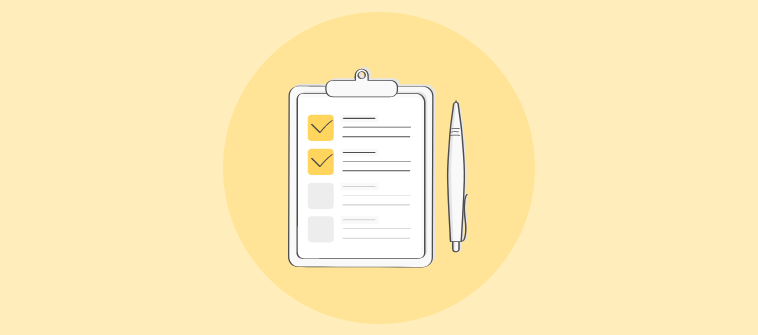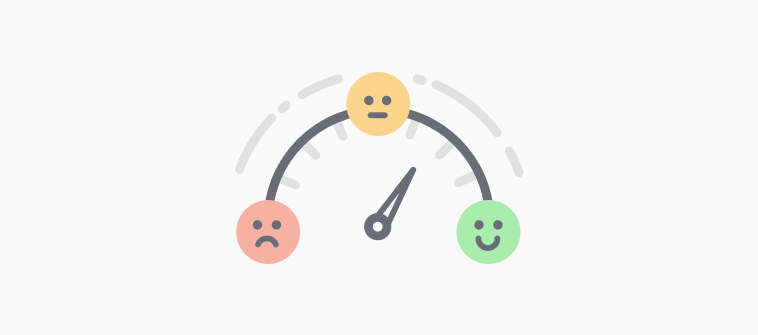
Is your classroom feeling lifeless? Are your students bored with the daily reading routine?
Try asking them reading interest survey questions to gauge their reading preference so you can inspire some motivation in your students.
Conducting a reading interest survey is the best way for a teacher or an educator to gain insights into the reading habits and preferences of the students. It also helps them to cultivate reading habits among students.
Teachers can use the data collected from the reading survey in schools and universities to plan their reading material more effectively and create a reading library or curriculum that interests their students. The survey can be sent to the students (participants) to evaluate any change in their reading behavior.
In this blog, we will discuss 15+ sample reading interest questions that will aid you in conducting your survey efficiently and increasing the survey response rate. We will also look at how you can conduct a reading interest survey.
Let’s begin:
What Is a Reading Interest Survey?
We all know that reading is essential. But this enthusiasm to read is not shared equally by all. Especially to students to whom reading does not come naturally. They find it challenging to develop a habit of reading.
As an educator, what can you do about this?
The best solution is to conduct a reading interest survey.
A reading survey is a questionnaire used to understand the students’ interest in reading. Also known as “reading interest inventory,” it is an excellent method used by educators to inspire reading interest in reluctant readers. It includes questions that ask students about:
- Reading frequency
- What kind of books do they like and dislike?
- Reasons for reading
- Attitude about reading
- Reading habits
- Book recommendations, etc.
The survey is designed to collect feedback from students to understand their needs and create the reading curriculum in such a way that will hold the student’s interest.
15+ Reading Interest Survey Questions
It’s clear that reading interest surveys are important. But what survey questions on reading should you include in your surveys that will give the hoped for results?
Here are sample reading survey questions for your reference. They can be customized to suit your requirements:
Also Read: Survey Question- 250+Examples, Types & Best Practices
1. What are your thoughts about reading?
Usually, this is the first question that an educator asks while conducting the reading interest survey. Especially if they directly want to get on-point. No survey is complete without this question. The response to this question helps your reader to express their thought process about reading in their own words.
2. What type of books do you like to read? Choose all that is applicable
☐ Fictional
☐ Biographies
☐ Romance
☐ Adventure
☐ Sci-Fi
☐ Horror
☐ Comedy
☐ Mystery
☐ Other
The response to this question would help you analyze what type of books your readers like the most. But, if you are preparing the reading interest survey for elementary school, you can replace the options of the above question as books with more pictures, books with more words, etc. to fit the age group.
3. What is your favorite book and why?
This open-ended question allows your readers to express their thoughts in their own words.
4. On a scale of 1-10, how likely are you to recommend reading more books to others?
The response to this survey question will help you analyze whether your students like to read books and their likelihood of recommending the same to their friends and families.
5. What do you like to do in your free time?
☐ Reading
☐ Playing Sports
☐ Watching TV
☐ Surfing the Internet
☐ Playing Video Games
☐ Other
This question would show the student’s interest, so books or reading material can be chosen based on their answer.
6. How do you study for the test?
The best way to prepare for a test is to review notes. If the student provides a different answer it will clue you into how you can help bring out the reader in them. With this question, you would be able to distinguish between occasional readers and those who despise reading.
7. Which is your favorite medium to read from?
☐ Ebooks
☐ Newspaper
☐ Magazines
☐ Print books
☐ Website
☐ Others
This question will help you understand the medium that your students prefer to read from. It will help educators while planning the next reading curriculum.
8. What distracts you when you’re reading?
The more you know about what distracts your students while they read, the easier it is to remove those distractions from their environment. It enables them to read peacefully and eventually build a habit of reading. It can be food, noise from other students, or anything that gets in the way.
9. How much time in a day do you spend reading?
☐ Less than 2 hours
☐ 2-4 hours
☐ 4-6 hours
☐ More than 6 hours
This question should be put in the reading surveys for high school students as they would give a more thoughtful and honest answer to this. Based on their response, you could make a reading schedule that works for them.
10. What motivates you to read?
☐ Assignments from Schools/ Universities
☐ Need for information
☐ Recommendation from friends
☐ Relaxation habit
☐ Parents/ Teachers asked to do so
☐ I love reading
This question will help you understand the motivation behind your student’s reading. Do they love reading, or do they only read when they are pressured to do so?
11. What’s the best book you have read and why?
With this survey question, you’ll be able to observe the student’s level of understanding. And, based on their explanations for selecting their ‘favorite book,’ you’ll be able to recommend books with a similar message to help them take their reading habit to the next level.
12. How would you select a book to read?
☐ Website recommendation
☐ Recommended by family
☐ Recommended by other students
☐ Going through library
☐ Others
The books your students choose show a lot about who they are and who they trust the most. It helps you make a reading schedule for them that works all the time.
13. Which statement best describes you?
☐ I read fast and mostly understand what I read
☐ I read fast but usually don’t understand what I read
☐ I read slow, but I understand what I read
☐ I read slow and struggle to understand what I read
The responses to this question will help you segregate the students that need the most attention. You can help them by offering different ways by which they can start understanding what they are reading.
14. How do you like to read?
☐ Read silently to myself
☐ Read aloud by myself
☐ Listen to the teacher read in class
☐ Listen to other students read in class
This question would help you to understand your students’ reading habits & styles. Based on this, improvements and changes can be made in their reading schedule, if needed.
15. How would you describe yourself as a reader?
It will help you understand where your students see themselves as readers. Based on the answer to this question, you can motivate them to read more.
16. Is there anything else about your reading life that you would like to share?
This is how you should end your reading interest surveys. If there is anything that you have forgotten to ask or anything special that your readers would like to share with you, this is the best way to do so.
How to Conduct a Reading Interest Survey?
It is crucial to design and conduct your survey in a proper way since the survey response rate depends completely on it. Hence, in this section, we will look at some of the best tips that will help you in conducting the reading interest survey efficiently and maximize the feedback collection process.
1. Determine the Objective of the Survey
Before actually conducting the survey, think about the reasons why you would like to run the reading interest survey. You have to decide what you want to achieve by conducting this survey. For example, Do you want to know about your readers’ likes and dislikes, or do you want to motivate them to read more?
Setting the objective of the survey will help you stay focused throughout the survey research and make the most of your resources. It will also assist you in deciding the survey tone and which survey reading questions for students you should choose.
Also Read: Student Survey Questions to Collect Valuable Students Feedback
2. Choose a Survey Maker Tool
A survey tool is essential to conduct and share the reading surveys. With the right tool in hand, you can save a lot of time. Try to search for an excellent online survey tool. These days many survey tools are available in the market. Select the software that offers maximum benefits and features at the best price. However, do check if the tool meets your needs. You can also check their online reviews before shortlisting a final tool.
3. Create the Survey
You can easily create the survey by using the reading survey questions examples discussed above or designing your own questions. If you are using online survey software, you can also select any one of their ready-to-use free survey templates for quick survey creation. You can also customize the surveys by changing their themes and colors to match your brand voice.
When it comes to the length of the survey, the shorter, the better, nobody likes to answer long surveys. Try to keep the survey size such that it doesn’t affect the survey response rate and, at the same time, gather enough data to help you make the right decisions.
4. Share the Survey
There are various methods to share and distribute reading surveys. Select an option that your students will be more likely to respond to. For example, you can give the survey handout to each student in your class if opting for the offline survey.
Another way is to share surveys via email. The school or university can also update the survey on the website and inform the students to participate. Keep the survey anonymous if you think your students may not want to reveal their identities.
5. Analyze the Data
The last step is to analyze the survey data once you get feedback from students. You can examine the results via qualitative as well as quantitative methods. By sorting the feedback, you can segment the students’ responses like what they like to read, their reading habits and frequency, etc. Try to look for trends and patterns that will help you take necessary actions to improve the overall effectiveness of your reading curriculum.
Choose the Best Reading Interest Survey Questions
You can always mold your reading material to satisfy your students’ needs based on the feedback received from the survey. All you have to do is select the right reading interest survey questions to help you understand your students’ reading habits. You can use these questions or modify them according to your survey needs.
Now that you have everything you need to conduct reading interest surveys, you can start running your next survey using the ProProfs Survey Maker Tool. The tool offers ready-to-use different survey templates that will save you a ton of time.
Happy Surveying!
 Tips
Tips
We’d love to hear your tips & suggestions on this article!
FREE. All Features. FOREVER!
Try our Forever FREE account with all premium features!


 We'd love your feedback!
We'd love your feedback! Thanks for your feedback!
Thanks for your feedback!







